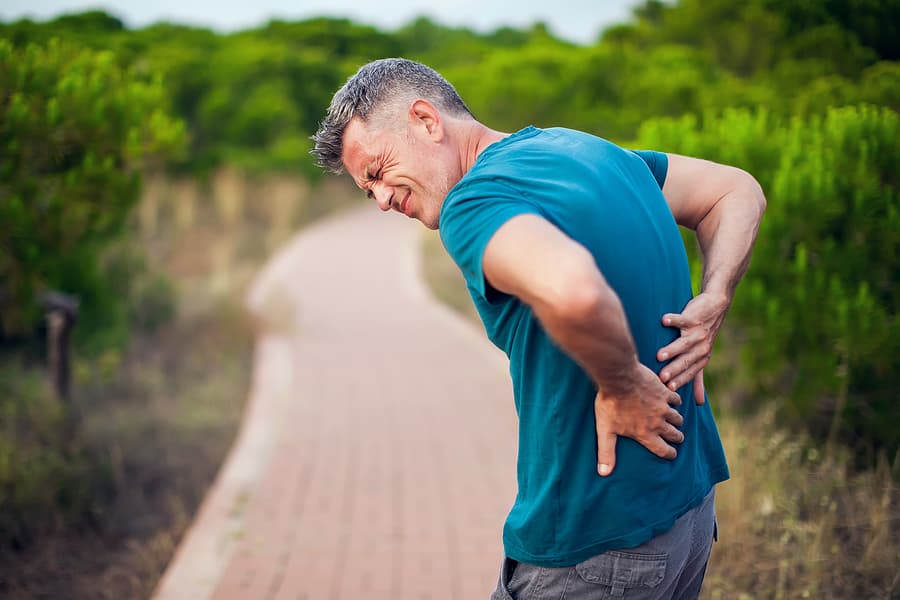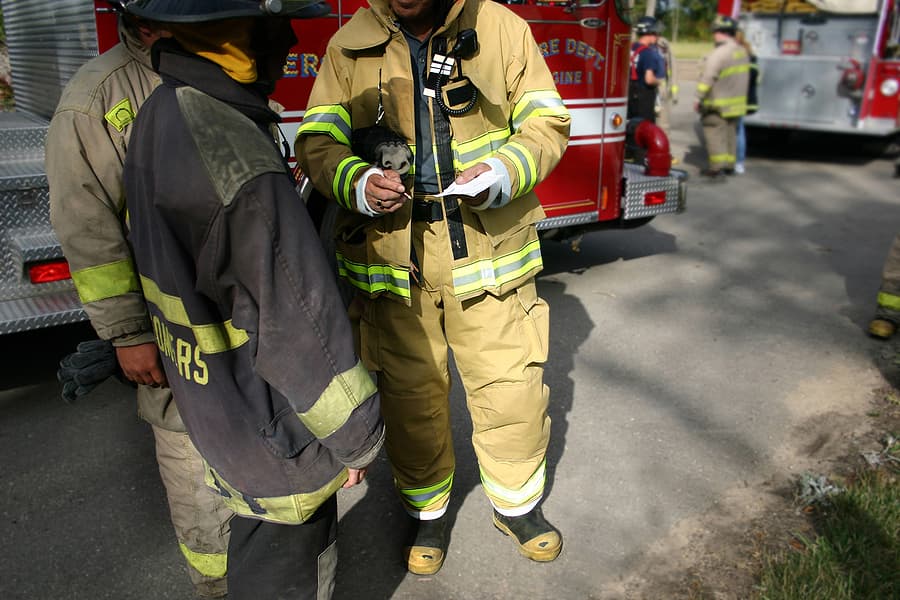What Are the Lingering Health Effects of 9/11?

In the aftermath of the 9/11 attacks, the health impact on the first responders and the hundreds of thousands of downtown area workers, residents and others was both immediate and far-reaching, often not felt until many years later. This post explains some lingering and newly diagnosed health effects of 9/11, such as many types of cancer, commonly experienced by first responders and those living, working, attending school, or visiting the area when the attacks occurred. For more information, please reach out to a 9/11 VCF lawyer.
Physical Conditions Caused by Exposure to the Dust Plume
Many people were injured by the terror attacks, in clean-up missions, and on rescue missions conducted in the pile of rubble from collapsed buildings. As staggering as these injuries were, the number of people suffering from disabling diseases in the more than twenty years since the attacks took place is even more significant.
The dust plume created by the collapse of the World Trade Center towers was a toxic mix of several carcinogenic or hazardous materials, including:
- Cement dust and particles
- Asbestos
- Persistent organic pollutants, including cancer-causing dioxins and byproducts of fuel combustion
- Heavy metal particles, including lead, which is poisonous to the brain, and cadmium, which harms the kidneys
- Carcinogens, including polychlorinated biphenyls (PCBs)
First Conditions to Appear – Respiratory and Digestive Issues
Chronic cough was one of the first symptoms many experienced after exposure to toxic dust. It was a grim foreshadowing of what was to come, as respiratory and digestive issues were among the most common ailments suffered by those exposed to the toxic dust plume in the 9/11 exposure area.
Some of the respiratory and digestive issues that many responders and survivors continue to experience decades later include:
- Chronic rhinosinusitis
- Gastroesophageal reflux disease (GERD)
- Asthma
- Sleep apnea
- Chronic obstructive pulmonary disease
The 9/11-related exposure symptoms are generally more severe in smokers. Most people who had early exposure to the toxins at Ground Zero suffered around a 10 percent reduction in lung function that persisted for over a decade.
Later 9/11 Conditions to Develop – Cancer
After the dust settled and clean-up operations at Ground Zero concluded, many responders and survivors exposed to the toxic dust began being diagnosed with cancer. Police officers and recovery workers who spent hours, weeks, or even months at Ground Zero were nine times more likely to develop cancer than the general population. The people who worked and lived in lower Manhattan on and during the many months after 9/11 breathed the same air as the responders and have been equally afflicted by the same cancers.
Increased rates were particularly steep in the following types of cancer:
- A 25 percent higher risk of prostate cancer
- A 41 percent higher risk of leukemia
- A 219 percent higher risk of thyroid cancer
There are currently more than 70 types of cancer linked to 9/11 toxic dust exposure, including:
- Blood and lymphoid tissue cancer, including leukemia, lymphoma, and myeloma
- Digestive system cancers, including colon, rectum, esophagus, and liver
- Breast cancer in both women and men
- Ovarian cancer
- Respiratory system cancers like bronchus, lung, heart, mediastinum, and pleura
- Skin cancers, including melanoma and non-melanoma
- Urinary system cancers, including those involving the kidneys or bladder
- Mesothelioma
Mental Health Issues
Not all of the effects of 9/11 were physical. Many responders and survivors acquired mental health conditions due to their first-hand exposure to the trauma of the terror attack. Post-traumatic stress disorder is the most common lingering health effect of the 9/11 terror attack. As many as 20 percent of those directly exposed to or injured in the attack suffered PTSD symptoms five to six years later. This rate is four times higher than in the general population.
The risk of acquiring PTSD was highest for those who:
- Were injured in the attack or were on a high floor of the World Trade Center when the attack occurred
- Evacuated late
- Lost a coworker or employer in the attack
- Witnessed terror, such as people jumping from buildings or running from the dust plume
- Knew someone who died in the attack
- Had little social support after experiencing the trauma of 9/11
Among rescue and recovery workers, those who arrived at the scene earlier were most likely to suffer PTSD symptoms. Those who usually worked non-emergency jobs such as sanitation or construction workers were more likely to develop symptoms of PTSD than first responders.
In addition to PTSD, 9/11 caused many people to develop other mental health conditions, including depression, anxiety, and substance abuse disorders.
The Federal Benefits Available for the 9/11 Population
After the terror attacks, Congress created a fund to assist those most affected by the terror attacks. Between late 2001 and 2003, the original September 11th Victim Compensation Fund (VCF) awarded more than $7 billion to those injured in the terror attacks or who had lost loved ones in the World Trade Center, Twin Towers, or on the hijacked airplanes.
After the original VCF closed, it became apparent that the needs of the 9/11 responder and survivor communities would continue and increase. In 2010, Congress passed the James Zadroga 9/11 Health and Compensation Act, and President Obama signed it into law on January 2nd, 2011. The Zadroga Act reinstituted the VCF and created the World Trade Center Health Program (WTCHP).
World Trade Center Health Program
The WTCHP replaced two earlier programs that offered similar services—the Medical Monitoring and Treatment Program and the WTC Environmental Health Center Community Program. The National Institute for Occupational Safety and Health (NIOSH) and the Centers for Disease Control and Prevention (CDC) administer the current WTCHP.
The program provides no-cost medical treatment and monitoring for those with physical or mental health conditions due to their presence at a 9/11 terror attack site, within the New York City exposure area, or along the routes used to dispose of debris from Ground Zero. Additionally, WTCHP funds research projects involving the medical and physical effects of 9/11 exposures.
Medical care and monitoring services, including diagnostic tests, surgeries, and prescription medications, are provided through one of the program’s Clinical Centers of Excellence in New York City and its nationwide provider network. The program also provides a certification process for medical conditions linked to 9/11. This process includes the development of a list of covered conditions.
The Victim Compensation Fund uses the list of covered physical health conditions for presumptive eligibility to file a compensation claim. The VCF also uses the medical certification process to determine if a claimant suffers from a condition linked to 9/11 toxic dust exposure. While the WTCHP covers treatment and monitoring of mental health conditions such as PTSD, the VCF does not provide compensation for mental health conditions.
More than 83,000 responders and more than 33,700 survivors are members of the WTCHP. Several hundred people enroll in the program every month. More than half of the membership (56 percent) are general responders, which are responders from agencies other than FDNY, such as the New York City or Port Authority Police, as well as others who worked or volunteered at the site.
Survivors – those people who lived, worked, attended school, or visited the area near Ground Zero – make up 29 percent of the membership. FDNY responders account for about 15 percent of the program’s membership. Each year, the downtown Manhattan workers and residents make up a larger percentage of members in the WTCHP. The most common age group for WTCHP members is 45-74 years old, though there are hundreds of members under the age of 35 and thousands over the age of 74.
The September 11th Victim Compensation Fund
When reopened in 201,, the VCF was initially approved for five years. In 2015, the Fund was reauthorized and extended for another five years. In 2019, the program’s Special Master announced that the program was unable to fund all of the pending and future claims due to financial insolvency.
Shortly after, President Trump signed The Never Forget the Heroes: James Zadroga, Ray Pfeifer, and Luis Alvarez Permanent Authorization of the September 11th Victim Compensation Fund. This law provided that the program has enough funding to cover claims filed until 2090.
The U.S. Department of Justice administers the VCF. The program provides compensation for wage loss and other economic losses experienced as a result of a 9/11-related physical health condition, as well as compensation for pain and suffering associated with the illness. Additionally, the program provides compensation for family members of those who died due to a 9/11 health condition.
There are no maximum caps on the overall amount of compensation a claimant is allowed to receive. However, the program limits non-economic damage claims to $90,000 for one non-cancer condition and $250,000 for a single cancer condition. Individuals can seek compensation for more than one certified condition. The Fund also places some limitations on the amount of lost earnings that may be awarded.
To file a VCF claim, a claimant must first register with the program. Registration is free, and the individual need not have a physical illness when registering. Registration merely reserves the claimant’s right to file a claim in the future.
Those who already have a condition certified by WTCHP must complete registration within two years of the certification. Those wishing to obtain compensation through a deceased claim must register within two years of the date when it was determined by the WTC Health Program or similar agency that the death resulted from a 9/11-related condition. If no such cause of death finding was made by the WTC Health Program, then a family’s time to register the claim with the VCF is extended to the year 2090.
When filing a VCF claim, the claimant must show that they were present at a 9/11-related site during the period of toxic exposure (9/11 through May 30, 2002) and that they suffer from a related medical condition. Once the claim is submitted online, it undergoes many reviews before the claimant receives a decision regarding their eligibility and compensation.
A Lawyer Can Help You Obtain 9/11 Benefits

For many, the physical and mental effects of 9/11 continue to be profound, even decades later. While hiring a lawyer is not required to apply for the WTCHP or file a VCF claim, having one can help you better understand your options and protect your right to compensation.
A September 11 benefits lawyer can help you gather the evidence you need to show that you were at Ground Zero and are now suffering from a related medical condition. They can also help you avoid errors that might delay getting the money you need.
Contact an experienced 9/11 VCF lawyer to learn more about the federal September 11th benefits programs and discuss your eligibility.



